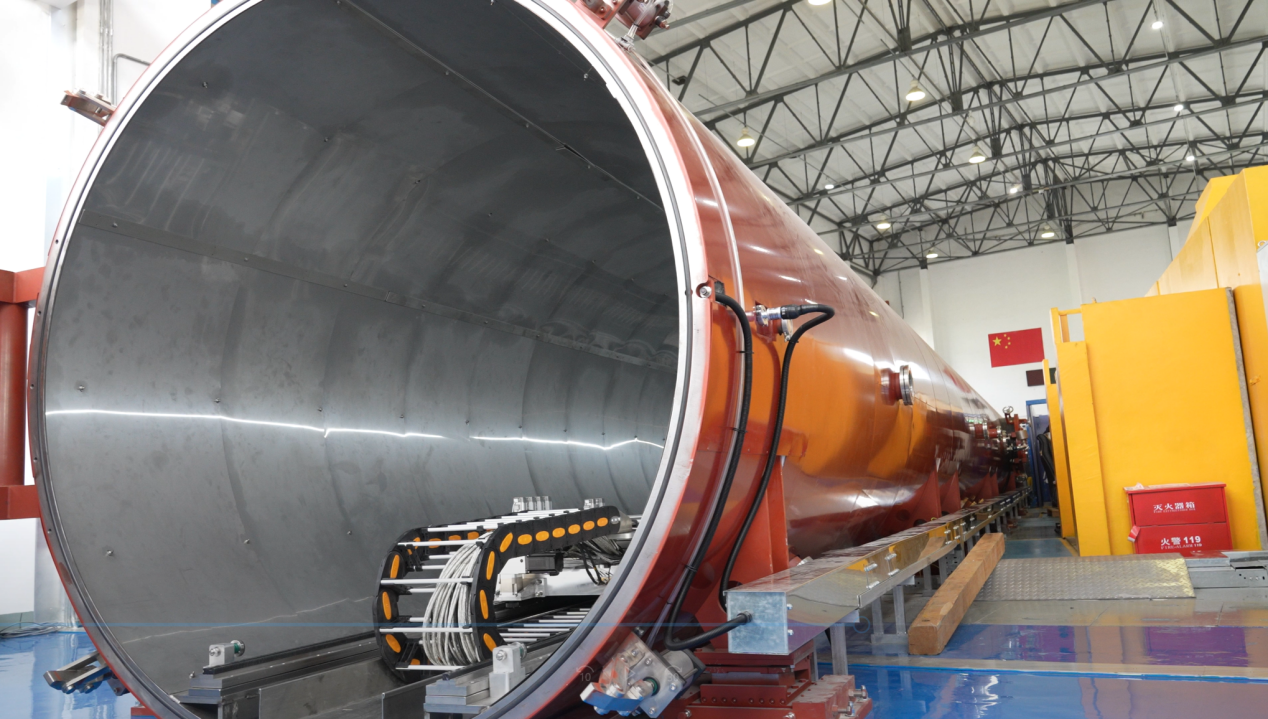On November 8th, Shanghai Jiao Tong University unveiled its latest research breakthrough: the LUOSHU Ultra-Long Small-Angle Neutron Scattering Spectrometer.
HETU and LUOSHU are renowned symbols of ancient wisdom. of Chinese civilization. Now, the brilliance of this traditional wisdom has illuminated the forefront of modern technology in the Large-scale scientific facility. The China's first cold neutron High rEsolution Texture and Stress neutron diffractometer HETU and the ultra-long Small-Angle Neutron Scattering Spectrometer LUOSHU were independently designed and funded by Shanghai Jiao Tong University (SJTU). Following the successful acceptance and official operation of HETU in 2022, the world-leading neutron instrument LUOSHU successfully got its technical acceptance on October 28, 2024, and was officially released to the public, in the hope of serving worldwide researchers. The project was led by Professor Zhong Shengyi, a jointly appointed professor at the SJTU Paris Elite Institute of Technology and the School of Materials Science and Engineering.
The next-generation neutron spectrometer LUOSHU has world-leading key performance indicators in its range, instantaneous range, and spectrometer length. This major scientific advancement signifies another breakthrough for China in the field of advanced neutron scientific instruments. It will greatly promote the application of neutron technology in aerospace, nuclear energy, chemical engineering, biomedicine, high-speed rail, and shipbuilding, as well as basic research. Furthermore, it will help overcome engineering bottlenecks and explore the frontiers of scientific discovery.
The LUOSHU spectrometer features significant technological innovations. It innovatively incorporates a flexible three-detector system - dual "L" detectors and a main detector. It enables coordinated measurements across ultra-long ranges for both isotropic and anisotropic materials under in-situ conditions. The spectrometer employs dual velocity selectors, allowing seamless switching between high-resolution and high-throughput modes to accommodate the demands of different material systems, effectively addressing the traditional trade-off between testing efficiency and resolution. LUOSHU spectrometer integrates multiple modes, including transmission small-angle scattering, grazing-incidence scattering, wide-angle scattering, and magnetic contrast variation. These capabilities provide nanoscale statistical information, enable in-depth surface-to-bulk characterization, and resolve magnetic structural features within a single system.
LUOSHU, hailed as a “super nuclear energy microscope”, has extensive scattering vector range, and is capable of non-destructively and quantitatively characterizing the microstructure of materials from nano to micro scale. The strong penetrating power of neurtron enables LUOSHU to detect internal microscopic defects of aerospace engines, nuclear reactor parts, and high-speed train hubs, ensuring the reliability of the key components during operation. Moreover, neutrons exhibit unique sensitivity to hydrogen atoms, This capability facilitates its widespread use in hydrogen-powered vehicle materials, aerospace, nuclear power, biomedicine, and on-chip communications. In the field of biopharmaceuticals, neutron scattering technology demonstrates extraordinary capabilities by vividly revealing the internal structure of proteins and unraveling the mysteries of life. Neutron scattering technology, offers a unique perspective and unparalleled functionality, making it an indispensable tool for exploring the microscopic structure of matter, thereby driving progress in materials science.
In recent years, with strong national support, China's neutron science has achieved rapid progress. Since 2018, Shanghai Jiao Tong University has independently designed and built an advanced neutron scattering material characterization platform, dedicated to advancing neutron spectrometer technology and neutron application science. This advanced neutron testing instrument LUOSHU will significantly contribute to urgently needed engineering applications and frontiers of scientific research in China, thereby enhancing China’s neutron characterization technology and research capabilities.


Proofread by Chen Chen
Editor on Duty: Yan Cheng

